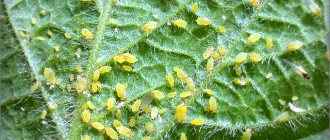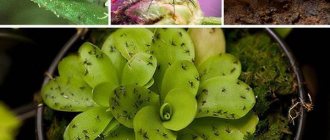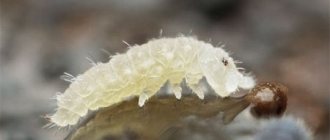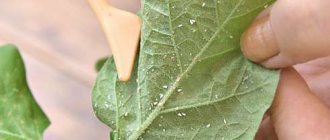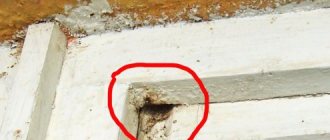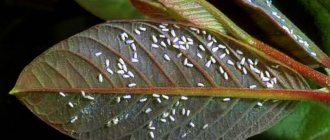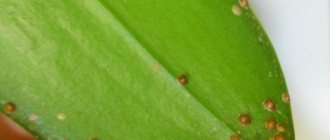Signs of aphids on indoor flowers
Aphids on indoor flowers, which must be combated immediately after detection, are quite noticeable. Small insects, black or green. Beetles of a brown or reddish hue are rarely found.
The presence of a pest on plants can be determined by the following signs:
- Unhealthy looking plants. A more general indicator for flowers susceptible to diseases and pests. In young plants, increased tension in the cell membranes is observed. Flowers look weak and wilt. If these symptoms are present, it is recommended to check the plant for pests.
- Large clusters of aphids are quite easy to detect. Pest colonies accumulate on the lower part of the plant. Insects most often attack young plants, as they feed on sap from the tissues.
- The upper part of the plant changes in structure. This is due to the fact that aphids feed on the sap of the flower. The leaf plates are greatly deformed, which becomes noticeable with prolonged exposure to the plant.
- The appearance of white plaque on leaf blades and shoots. During their life, the aphid secretes a sweet, thick juice. Aphid honeydew becomes a favorable environment for sooty fungus (black fungus), which subsequently turns the white coating black.
When the first signs of pests appear, it is necessary to carefully inspect the plant for the presence of insects.
Signs of plant infestation by aphids
The wilting of young leaves and buds is the first and surest sign that the plant has some kind of parasite. Even without seeing the pest, you can understand from the wilting symptoms that not all is well with the plant. At the same time, more mature leaves remain untouched - any pest chooses to feed on young, tender and juicy tissues, which are easily digestible and which are easier to pierce with the proboscis.
Proboscis injection sites. Upon closer inspection, dots surrounded by dead tissue can be found on the affected shoots. Damaged branches, continuing to develop, become bent, and the buds become deformed.
Honeydew. One hundred percent “evidence” is the presence on the plant of a sticky secretion of aphids, the so-called honeydew. If the branches and leaves are sticky to the touch, you can say with confidence that the flower has been attacked by aphids. Aphid secretions are not poisonous.
Ants. For the sake of honeydew, some species of ants have learned to “graze” aphids. The presence of ants on a plant can serve as an indirect sign of aphid infestation. In addition, ants can bring their aphid “cows” to “pastures” suitable for feeding.
[!] Fighting ants in the house is also a preventive measure against aphids.
Aphids are bred only by black ants, the so-called myrmeca. Predatory red ants, Formica, consider aphids only as prey.
Types of aphids on flowers, distinctive features and breeding features
Aphids on indoor flowers can be different. Each species has characteristic features and regions of distribution. The methods of struggle do not differ from each other.
Green peach or greenhouse
The green peach aphid has several names. It is also called greenhouse or tobacco.
The following features are characteristic of this type of pest:
| Index | Description |
| Color | The body of the female aphid is yellow, pink or green. The tail is yellow, the abdomen is green, the chest and antennae are black. The female lays black eggs. |
| Size | The female's body can reach up to 3 m in length. Juice tubes, expanded at the base, reach a length of about 1 mm. The tail is 1/3 the size of the juice tubes. The tail can reach up to 0.5 mm. |
| What plants does it affect? | The green peach aphid causes the greatest harm to garden plants. Its primary hosts are cherry, apple, plum, apricot and peach trees. Then the pest moves on to potatoes, nightshades, carrots, watermelon and tobacco. The number of secondary hosts includes more than 200 crops. Susceptible indoor plants include kalanchoe, lemon, orchid, rose, violets, hydrangea and basil. In rare cases, aphids “settle” on flowers that secrete a poisonous milky sap. These include ficus and spurge. |
| Regions of distribution | The green peach aphid is widespread in European countries, Asia, America and Africa. The insect has become slightly widespread in the western part of Russia, in the Far East. Isolated cases are also observed in Ukraine, the Caucasus, Transcaucasia and Moldova. |
Green peach aphid is a dangerous pest, which is considered to be native to Asian countries. The reason for this opinion is that the peach tree (the host plant of aphids) is native to Asia.
Melon or cotton
Aphids on indoor flowers, which must be combated immediately after detection, can be of several types.
The danger of melon aphids is the possibility of infecting plants with a dangerous virus.
Among the distinctive features of cotton aphids are:
- long mustache. In size - larger than that of individuals without wings;
- the tail and juice tubes are small and short;
- dark green tail, black head and chest.
The cotton aphid has become widespread in Russia, Asian countries, Europe and America. Because
The melon aphid has a narrow oval body. It can reach up to 2.1 mm in length. It has a straight forehead and antennae, the size of which can reach up to ½ hour of the body. There are hairs all over the surface of the body that are difficult to see with the naked eye.
330 plant species are affected by melon aphids. The pest is a carrier of about 50 viral diseases, but causes the greatest harm to agricultural crops.
Bean (beet)
Beet aphids have several names. It is also called leaf or legume. This species poses a danger to beets.
The wingless aphid has an ovoid body, the length of which can reach up to 2.5 mm. The body is greenish-brown or black. On the surface you can see traces of a waxy coating. Paws and
The distribution area is very wide. In Russia, beet aphids can be found in the North-West, Siberia, Altai, and central regions. Aphids are also found in Asia, Kazakhstan, and Moldova.
Big potato
The potato aphid is the largest representative. Insects can reach up to 3.5 m. In this case, potato aphids, in most cases, live in large colonies. Both winged and wingless individuals live in the colony. Representatives with wings are able to move between plants, which harms both agricultural crops and indoor flowers.
The color feature of potato aphids is the variety of pigmentation. On one plant you can find individuals of the same species with different colors (brownish head, dark colored body). Wingless females are green in color and have an elongated body.
The danger of potato aphids lies in its widespread distribution. In Russia, the pest is widespread.
What do houseplants affected by aphids look like?
With minor damage, the leaves begin to curl. During inspection, you can notice small punctures and small, about 2-3 mm, insects on them. Most often, parasites are white or greenish in color. White aphids love to settle on flowers with delicate, soft leaves, such as violet, begonia, and cyclamen.
Tips for the garden, vegetable garden and flower garden
How to water flowers during vacation or long absence
Pear diseases and the fight against them with photos of what the leaves look like
Watering strawberries during flowering and fruiting
Sometimes the presence of aphids can be determined by small growths on stems or leaves. They cannot be seen on tree trunks of plants, since the insect’s proboscis is designed in such a way that it is not able to bite through the bark. The main harm of these parasites is to pierce the thin skin of the leaves and suck their juice. It often leads to the death of the entire flower when the colony attacks either a young shoot or is so large that it can paralyze the growth of an adult plant by sucking the juice out of it.
Attention! If you live in a private house and you have access to ants, then there is a high probability that your plants will always be affected by swarms of aphids. Where there are ants, there are aphids and just the opposite! Why? Ants are designed to protect such insects from pests, care for them, and even help them spread.
What plants does it affect?
Aphids cause more damage to crops.
At home, you can find aphids on the following plants:
- violet;
- begonia;
- primrose;
- orchid;
- cyclamen;
- spathiphyllum;
- roses;
- chrysanthemums.
In rare cases, aphids have spread on palm trees or dracaenas, since their dense foliage is difficult to pierce with sap tubes. Also, young plants are more susceptible than older ones.
Where do white and other insects come from?
The life cycle of aphids begins in the root zone of plants, in the folds of tree bark and on their branches. It is in such hard-to-reach places that the fertilized female lays her eggs. After wintering, young individuals emerge from the clutches and settle in the most attractive plantings. By the end of May-June, a new form of adult insects appears in the aphid colony - flying females. Thanks to them, pests occupy increasingly larger areas.
Attention! Wind plays a huge role in the spread of aphids.
The spread of small pests is greatly facilitated by ants feeding on honeydew secreted by aphids. They behave like farmers, raising these insects, caring for clutches, protecting them from natural enemies.
Aphids also penetrate very successfully into the apartment. The main reference point for them in the warm season is the green color of the leaf blades and the aroma of essential oils released by decorative plantings.
Ways to enter the house
Aphids on indoor flowers, which must be combated immediately after detection, appear by transmission by other animals or humans.
There are several ways the pest can appear:
- on a person’s clothes and shoes;
- in animal fur;
- through ants. There is an interaction between aphids and ants. Ants find food, and aphids protect them. If you remove the ants, the aphids will go away (and vice versa);
- through open windows and doors;
- with vegetables and seedlings;
- through the ground. Some types of aphids lay eggs in open ground, so it is not recommended to use street soil for planting.
Aphids appear on indoor flowers in different ways, including being brought into the house by ants.
To avoid the massive spread of aphids, it is necessary to regularly carry out preventive measures to destroy pests.
Varieties
In total, there are about 30 species of aphids that live on indoor plants. In a large group, the most common varieties are:
- Home;
- Ordinary potato;
- Greenhouse;
- Apple green;
- Peach;
- Cabbage;
- Tobacco;
- Mealy;
- Bakhchevaya;
- Thistle;
- Cherry.
Aphids from garden crops prefer to settle on indoor flowers in the winter.
According to color it happens:
- White;
- Pink;
- Green;
- Yellow.
Reference! Black aphids can infect flowers with pathogenic bacteria and viruses. Lead to rapid death.
Popular: Reasons why monstera leaves turn yellow and what to do
Why are aphids dangerous for home flowers?
The pest causes the greatest damage to street and garden crops and garden trees.
For indoor plants, aphid infestation is dangerous due to the following:
- Changing the appearance of the plant. Aphids deform the tops of the plant, which leads to a deterioration in its appearance.
- Aphids attract ants to the plant. There is an interaction between aphids and ants, so eliminating one group of pests eliminates the other.
- Aphids are carriers of diseases. The most dangerous is niello - a sooty fungus that forms on the surface of honeydew secreted by pests.
- Aphid colonies, which develop very quickly, can destroy most of the plants. The pest is able to move with the help of its wings. Harm stops the growth and development of the plant, which leads to its further death.
Buds exposed to the pest fall off before they have time to open.
Possible consequences
The effects of aphids on a plant depend on the degree of infestation and the size of the colonies. Insects attack young and adult crops. If the plant has become infected recently and the colony is small (single individuals), this leads to drying out and death of individual leaves.
If the crop is not treated, the aphids multiply and the crop begins to rapidly wither. At the same time, pests move to neighboring plants. Without intervention, the crop may die within a month .
Young flowers are more susceptible to the negative effects of parasites than mature ones; their complete withering occurs faster.
Mechanical methods of getting rid of pests
Aphids on indoor flowers, which can be combated using mechanical methods, despite their small size, are visible to the naked eye. You can remove the pest manually.
If the damage is minor, then the following methods can be used:
- For mature plants with a strong root system and trunk, you can water them with a hose. This method guarantees quick removal of insects. It is best to spend it outdoors, away from other cultures. Small plants can be washed with a gentle stream in the shower.
- Removing parts of the plant exposed to the pest. If egg clutches appear on the leaf plate (most often on the reverse side), it is recommended to remove the leaf. Treat cut areas with a disinfectant solution.
- Bathing is the best option for removing aphids. The soil in the pot is secured with bags and rubber bands. Pour warm water (room temperature) into a container. After turning the plant over, you need to rinse it.
Spraying should also be carried out as a preventive measure.
Aphid - description of an insect
- The insect, whose body length is no more than one millimeter, has a color from green to brown.
- Appears on leaves and stems in large numbers and can move by jumping.
- The pest feeds on leaf sap and is most often seen in areas with young shoots.
- Insects can reproduce quickly and most often appear in colonies, which makes them more visible to humans.
- Aphids have wings, so they can fly from one plant to another.
- Most often, white aphids appear on indoor plants, which not only deplete the shoots and leaves of flowers, but also infect the vegetation with various fungi.
- Since the insect tends to secrete a sticky liquid, which is the most suitable area for the proliferation of fungal infections.
Harm to indoor plants
Aphids can cause the following harm:
- leads to the death of shoots;
- a fungus develops that infects the flower and leads to its death;
- the leaves curl into a tube;
- There is a sticky coating on the leaves, as a result of which the required amount of oxygen does not enter the plant.
Let's celebrate! The insect reproduces quickly and when one plant is infected, the pest quickly moves to healthy indoor flowers.
Causes and signs of pest appearance
An insect may appear on a houseplant as follows:
- an insect may fly into the window;
- aphids are small in size, so they are often carried into homes on human clothing;
- when buying a new plant, there may be insect eggs on the leaves;
- Pest larvae may be in the ground when cuttings are transplanted;
- plants located on balconies can become a source of infection.
Unlike many parasites, the occurrence of which can occur without symptoms for a long time, the appearance of aphids is accompanied by the following symptoms:
- the leaves of the indoor flower become sluggish and droop;
- on young shoots you can notice damage and drops of viscous liquid;
- leaves turn yellow and curl;
- In places where indoor flowers are located, you can notice the presence of ants.
Note! Aphids can also damage buds and flowers; with such damage, the buds quickly wither and fall off.
Chemical preparations for aphids
Chemical treatment against aphids is quite dangerous, but the most effective method. Chemicals are used in case of severe infection, as well as if pest colonies have spread to a large number of plants.
Fitoverm
"Fitoverm" is an insecticide that is used to treat garden plants, garden trees and indoor flowers. You can notice the effect of the drug 2-3 days after treatment.
A 3-5 ml bottle or ampoule is suitable for indoor plants.
Method of dilution and use of the drug:
- For 1 liter of clean water, use 2-3 g of the drug.
- Heat the water.
- Pour water into different containers - approximately 80% and 20%.
- Dissolve the drug in a smaller volume of liquid, and then carefully combine the 2 parts.
The solution must be used within 2-3 hours after preparation. The liquid must be poured into a spray bottle and sprayed.
Aktara
"Aktara" is an insecticide that affects the gastrointestinal tract of pests. The chemical is packaged in sachets. The weight of one is 4 g. A solution is prepared for use, and then sprayed.
The peculiarity of Aktara’s action is its fast and effective work - after 1 hour the first results can be noted.
The drug is effective for up to 60 days, and does not affect the plant (does not have a cumulative effect) when used multiple times.
Aktellik
The drug "Actellik" is another fast-acting insecticide, which is sold in 2 ml ampoules.
The manufacturer recommends using the product in cases where other control methods do not help. The product is dangerous and quite toxic (belongs to class 2).
Despite the toxicity of the substances, Actellik can be used to treat tools and premises. It must be remembered that the product is dangerous for all living creatures in water and land.
Spark
“Iskra” is a drug that helps with plant infestation by various pests. The drug helps against 100 types of insects. "Iskra" is available in 4 forms, which help with different degrees of damage.
The drug is harmless to plants and humans. At the same time, Iskra does not destroy the pest 100%.
Tanrek
"Tanrek" is an effective insecticidal preparation used for spraying plants. The effect of the drug occurs after 3-5 days. The drug affects the central nervous system of the insect, causing paralysis and death.
Pour 2-5 ml of solution into 1-2 liters of water and mix thoroughly. Spray the plants with liquid. Store the solution for no more than 2 hours.
How to fight?
Methods for getting rid of pests include traditional methods and the use of industrial means. The choice of treatment option depends on:
- degree of spread of aphids - pests are observed on one or more plants;
- colony size - there are single individuals or numerous clusters;
- accompanying circumstances - if there are children or animals in the room, the use of industrial drugs and certain folk remedies may be unsafe.
Attention! Mostly, pest control is not difficult - you can get rid of aphids completely even with one or two treatments of the plant.
If individuals are small in number, it is recommended to limit themselves to their mechanical removal and the use of traditional methods of treatment. In case of extensive colonies and the spread of aphids to other plants, it is advisable to resort to more radical measures - treating the crop with industrial means.
How to get rid of it using chemicals?
Insecticides quickly and effectively eliminate parasite colonies , including large ones. When a pest enters the body, the poison affects its nerve impulses, causing a complete blockage.
Among the effective industrial preparations for combating aphids are:
- "Fitoverm" — the product is presented in ampoules, one is dissolved in 0.5 liters of water. The plants are sprayed with the liquid; in case of severe lesions, it is advisable to wipe these areas with a sponge soaked in the medicine.
To eliminate pests, two treatments with an interval of six days are sufficient. The drug poses absolutely no danger to humans.
- "Aktara" : - suitable for controlling aphids in garden and home conditions.
The solution is prepared in a proportion of 8 g of product per liter of water. It is recommended to spray crops away from children and animals (on the balcony, veranda, in the bathroom). When root influence is applied, the soil is watered; it is also advisable to wipe the window sill where the pot is placed. The effect of the poison occurs within three weeks, the insecticidal effect lasts up to two months. In some cases (with extensive colonies), the treatment is repeated after 20 days to eliminate surviving and grown individuals. - "Actellik" is a toxic drug, so use is allowed only in the open air (for example, on a balcony). The solution is prepared in a ratio of 1 ml of product per liter of water. The plant is sprayed, it is advisable to wipe with a sponge. If the colonies are few in number, one procedure is sufficient. For extensive lesions, it must be repeated after two weeks.
Attention! When repeatedly treating plants with industrial products, the concentration of the solution should not be reduced. This may cause the pest to develop resistance to the product.
How to destroy using folk remedies?
Traditional methods are quite effective in the fight against aphids , especially with unexpressed damage to the crop. However, regular treatments are often required.
The following means are used to combat aphids:
- Water - if there are single individuals, it is enough to wash them off, for example, with a shower (cover the soil with polyethylene). Additionally, wipe the leaves and stem with a sponge.
- Soapy water - the surface of the plant is covered with a solution by spraying, which protects the leaves from punctures of aphids and their movements. To prepare the product, dissolve 10 g of tar or laundry soap in 1 liter of water.
- Citrus infusion - aphids are repelled by strong aromas, such as lemon or orange. To prepare the product, combine 40 g of fresh zest with 1 liter of boiling water, leave the liquid for three days. Spray the plant or wipe it with a sponge. The product can also be used for prevention.
- Soda-soap solution - combine 2 liters of water with 2 tbsp. spoons of soda, 40 ml of soap. Spray or wash the plant with the solution. Adults are destroyed immediately; repeated treatments will be required to get rid of young animals.
- Vegetable infusion - a remedy obtained from hot peppers or onions will help against aphids. To make the chopped head or three pods, pour 200 ml of cool water and leave for four hours. Spray or wipe the affected parts of the plant.
- Vinegar - 1 tbsp. add a spoonful of the product (9%) to 1 liter of water. Wipe the affected areas with a sponge; if there are large colonies, spray the plant completely.
- Soda and hydrogen peroxide - dissolve 1 teaspoon of each substance in 500 ml of water. Wipe or spray the plant with the product.
- Ammonia - dissolve 5 ml of the substance in 1 liter of water and add a little laundry soap. Spray the crop and wipe with a sponge.
Folk recipes
You can also fight aphids using traditional methods.
Folk remedies are used in cases where pest damage is minimal.
Ammonia
5 ml of ammonia must be dissolved in 1 liter of water. Add a little liquid laundry soap to the resulting solution. Pour the prepared liquid into a spray bottle, spray the flower and wipe with a sponge.
Red pepper
The pungent smell of red pepper repels small insects. Pepper also affects the central nervous system of pests, as it contains alkaloids.
Heat 10 liters of water. Finely chop or grind 1 kg of fresh peppers using a meat grinder. The components must be combined and infused for 10 days.
Vinegar
In 1 liter of water you need to dilute 15 ml of vinegar (9%). If a bite of higher concentration is used, it must be diluted beforehand.
If insects have attacked the plant pointwise, then it is enough to wipe the infected areas with a solution. In case of severe damage, the plant can be sprayed.
Cinnamon
Cinnamon is a safe, environmentally friendly and easy way to eliminate aphids. Ground seasoning must be sprinkled on the bush (in small quantities). The product remains in effect until washed off.
Soda and salt
For 1 liter of water you will need 15 g of baking soda, 10 g of salt and 5 ml of liquid laundry soap.
All components need to be mixed together and the resulting solution should be sprayed onto the flowers 2 times a day.
Ash
Ash allows you to get rid of pests both in dry form and in the form of a solution. In 3 liters of water you need to dilute 300 g of sifted wood ash, add 30 g of soap shavings. The ingredients must be infused for 2 days, and then regularly sprayed on infected plants.
Milk and iodine
Iodine solution is dangerous for plants, so when preparing the product, you must carefully observe the ratio of all components. High iodine content can cause leaf burns.
For 1 liter of water you will need 30 drops of iodine and 100 ml of milk (2.5%). In a separate container, mix milk and iodine, and then pour the resulting solution into water. The finished mixture is sprayed onto the plants after preliminary shaking.
"Coca Cola"
Coca-Cola affects the plant due to phosphoric acid, which is part of the composition. Infected plants are sprayed with a sweet drink.
Celandine
For 1 water you will need 1 tbsp. dry celandine. Place the herb in water and boil for 20 minutes. Leave the resulting decoction for 5 hours, and then carry out regular spraying 3 times a day.
Garlic
For 1 liter of water you will need 30 g of garlic.
Grind the product in a convenient way and place in water. Infuse the liquid for several days, and then wipe the infected leaves with the resulting infusion.
Mustard
For 1 liter of water, 10 g of concentrated mustard is required. Combine the components and spray the plants.
Vodka
In 1 liter of water add 100 ml of vodka, 300 ml of vegetable oil and 20 g of laundry soap (shavings). The resulting solution must be sprayed.
Green soap
Dissolve 200 g of green soap in 1 liter of warm water.
Mix the resulting solution with 9 liters of water, and then spray the flowers.
Birch tar
Dilute 15 g of birch tar in 10 liters of water, add 50 g of laundry soap (shavings). Mix the components thoroughly and spray regularly.
Tobacco
For 1 liter of water, 2 g of tobacco dust is used. Mix the components and leave for 24 hours. Spray with the prepared solution 2-3 times a day.
Boric acid
For 1 liter of water, 20 mg of boric acid is required. Mix the ingredients until completely dissolved while heating. Spray the plants with the resulting solution.
Aphids are a dangerous pest that can attract other insects and transmit diseases. Aphids are found quite often on indoor flowers, sometimes in symbiosis with ants. It is necessary to combat pests using integrated methods, as well as carry out preventive spraying.
Folk remedies to combat aphids
- Wash the affected flower under a cold shower in the bathroom. If you try and wash all the affected areas of the plant well, then 80% of the parasites will be washed off and die.
- It is effective to spray diseased plants with a soap solution. Dissolve 20 g of laundry soap, grated on a fine grater, in 6 liters of warm water. Strain the solution and spray. But try not to let the soap solution get into the soil.
- Accumulations of aphids can also be destroyed using garlic infusion. To do this, chop 3 cloves and pour 1 liter. warm water. Let it brew in a dark place for at least a day. Strain and spray your flower.
- It is possible to get rid of aphids using shag or strong cigarettes. One pack per liter of hot water is enough. Let this solution sit for 5 days in a dark place, then strain and spray on the affected specimens.
- There is another way - using dichlorvos. Place the flower pot in a plastic bag. Place a piece of cotton wool or napkin heavily soaked in dichlorvos there. Tie the bag and place it on the balcony or in a non-residential area for 4-5 hours. Afterwards, remove the flower from the bag, wash it in the bathroom, dry it and put it back in place.
You need to understand that in one go you will not get rid of numerous parasites - their females and males, larvae and eggs. Treat the affected plants several times at intervals of 4-7 days until the aphids are completely destroyed. No need to worry - folk remedies will not harm the plant.
Prevention of appearance on house flowers
Preventing an aphid invasion is much easier than fighting it. For prevention, you need to take the following steps:
- Ventilate the room regularly.
- Place plants correctly.
- Do not oversaturate the soil with fertilizers.
- For replanting, use only suitable soil.
- Keep your home garden clean and tidy.
- Remove spoiled leaves promptly.
- Keep ants out of your house.
- Inspect flowers regularly.
- Cover window openings with mosquito nets.
- Quarantine new window sill inhabitants.
Careful attention to ornamental plants is the best prevention of infection by aphids. It is this approach that will save you from the invasion of pests on your home flowers. And a quick response will help you get out of the developing problem with minimal losses.
Preventive measures against aphids
Strictly speaking, they are the same as in the case of other indoor pests. Carefully inspect the plant, care for it properly, and provide it with decent conditions. Keep ants away and, if possible, keep outdoor animals away from your plants.
Carry out preventative measures periodically. You can use any of the folk remedies, in a single version. Do not forget that new flowers in the house must undergo an adaptation period and quarantine. And of course, carefully inspect all new plants that you bring into the house.
Aphids are one of the most dangerous pests for indoor plants. And the point is not even that it sucks the life out of the latter, but that it can also infect it with a fungus or virus, which will lead to death for your flower. And the pest multiplies very quickly, so the sooner you find it, the greater the chance of saving the flower.
